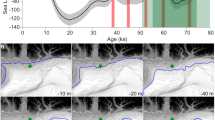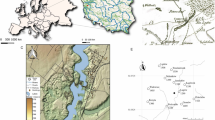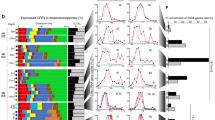Abstract
THE letter of Mr. J. Sinel, in NATURE of September 19, on the submerged forest bed in Jersey, deals with several questions of great interest in relation to the submerged forest on the south-western coast of Wales. I hope to publish shortly an account of this forest-bed (so far as it is seen in Pembrokeshire) and the deposits associated with it, but in the meantime I may state that I have found worked flints—flakes and cores—in two localities on the Pembrokeshire coast in positions which correspond with that of the stratum of blue clay below the forest-bed at St. Heliers. These flints were clearly worked by men who inhabited the woodland, now submerged, before the trees fell into decay and formed the peaty mass of trunks, branches, leaves, &c., overlying the true root-bed of the “submerged forest”. One locality near Amroth, in Carmarthen Bay, yielded cores and flakes in abundance; the circumstances indicate the existence of a chipping-floor or implement-factory on this part of the submerged land-surface, which now, during spring tides, is covered by not less than 20 ft. of water. In the patch of submerged forest recently exposed at Fresh-water West, in southern Pembrokeshire (see NATURE, March 28, 1912), a few small flint implements were also found.
This is a preview of subscription content, access via your institution
Access options
Subscribe to this journal
Receive 51 print issues and online access
$199.00 per year
only $3.90 per issue
Buy this article
- Purchase on SpringerLink
- Instant access to full article PDF
Prices may be subject to local taxes which are calculated during checkout
Similar content being viewed by others
Author information
Authors and Affiliations
Rights and permissions
About this article
Cite this article
LEACH, A. Antiquity of Neolithic Man. Nature 90, 134 (1912). https://doi.org/10.1038/090134a0
Issue date:
DOI: https://doi.org/10.1038/090134a0



